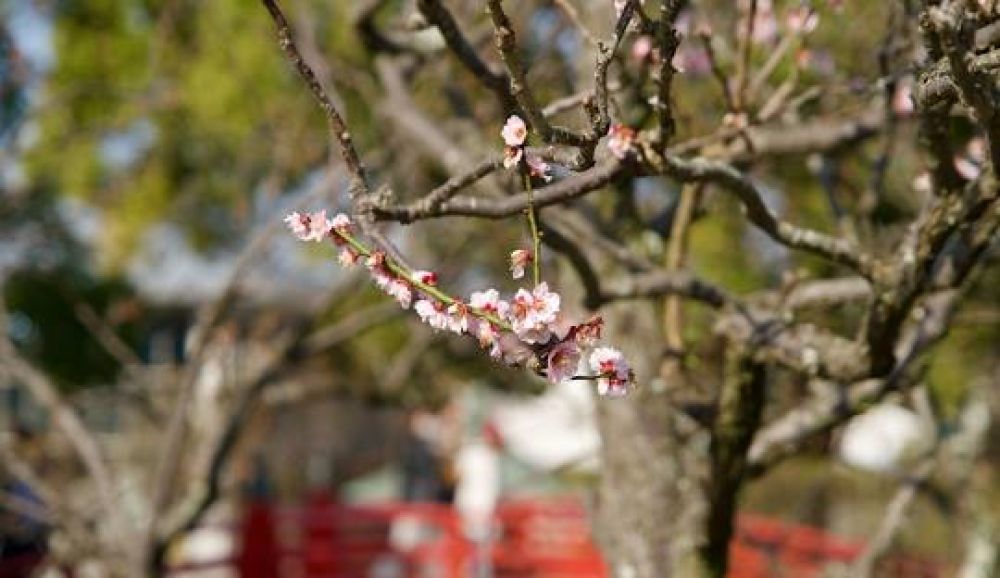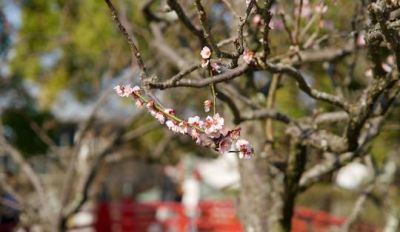

Omikuji is one of the traditional activities that visitors can partake in while visiting Dazaifu Tenmangu Shrine. Upon giving a small offering, visitors can draw a stick that corresponds to a numbered drawer containing a fortune. These fortunes are written on strips of paper and range from great blessing to great curse, providing insight into various aspects of life including health, love, and success. It's a fun and exciting way to get a glimpse into your future according to the Shinto tradition. After reading the fortune, many people tie their omikuji to designated areas within the shrine grounds, in the hope that good predictions will come true or bad ones can be averted.
Ema are small wooden plaques on which Shinto worshippers write their prayers or wishes. The tradition is that you purchase an ema at the shrine, write your personal message or wish, and then leave it hanging up at the shrine. In the context of Dazaifu Tenmangu, many students write wishes for academic success as the shrine is dedicated to Tenjin, a deity known for wisdom and learning. This is a very reflective activity that allows you to set your intentions and hopes. The act of writing your wish is a moment to pause and think about your personal goals and aspirations.
Dazaifu Tenmangu Shrine is famous for its beautiful gardens and seasonal flowers. Perhaps the most significant are its plum blossoms, which typically bloom in late February and early March and are celebrated with the Plum Blossom Festival. Visitors can enjoy a leisurely walk through the gardens, admire the over 6,000 plum trees, and take part in cultural events. Additionally, other seasonal flowers such as peonies and iris can be viewed at different times of the year. The bloom of these flowers attracts visitors from all over, adding a vivid burst of color to the historic shrine grounds.
Dazaifu Tenmangu Shrine hosts a number of festivals and cultural events throughout the year. One of the most notable festivals is the Dazaifu Tenjin Matsuri, a Shinto festival that features Kyokusui-no-En, a Heian-period poetry game performed by people in traditional dress. Visitors can watch as participants dressed in Heian-era costumes float cups of sake down a stream and compose poetry before the cups reach them. Other events include the Usokae Ritual, in which visitors exchange old wooden good-fortune birds for new ones to bring in luck for the New Year. These festivals offer a fascinating look into Japanese culture and traditions.
Visitors of Dazaifu Tenmangu Shrine may have the unique opportunity to experience a traditional Japanese tea ceremony. This activity includes a ceremonial preparation and presentation of matcha, or powdered green tea, typically conducted by skilled practitioners. You will learn about the intricacies of Japanese tea culture, the importance of each movement and item used in the ceremony, and the philosophy behind the practice of serving and receiving tea with mindfulness and respect. The serene surroundings of the shrine make this a particularly enriching experience.
For those interested in the rich history of Dazaifu Tenmangu Shrine, guided tours can be an excellent way to learn about its past and significance. These tours often cover the shrine's founding, its connection with the revered scholar Sugawara no Michizane, and how it evolved into a center of culture and education. Guides may also delve into stories about the resident deities and the symbolism found throughout the shrine's structures. The insightful commentary enhances the experience, allowing visitors to connect with the site on a deeper level.
Dazaifu Tenmangu Shrine has a number of shops where visitors can purchase souvenirs, charms, and traditional crafts. These shops offer a wide range of items from good luck amulets, talismans for academic success, to local crafts and specialty snacks unique to the area. In addition to being perfect keepsakes, these items also hold cultural significance and can serve as a reminder of your visit. Shopping at these stores not only provides you with tangible memories of your trip but also supports the local artisan community.
A visit to the Dazaifu Tenmangu Shrine is incomplete without a relaxing stroll through its expansive grounds. The shrine's lush, tranquil pathways offer a peaceful escape from the hustle and bustle of the city life. While walking, visitors can admire the stunning architecture of the shrine buildings, view ancient treasures, and experience the spiritual atmosphere. The ground's design, which integrates natural landscapes and religious structures, offers a unique insight into Japanese aesthetics and spirituality.
Photography enthusiasts will find Dazaifu Tenmangu Shrine particularly appealing with its photogenic landscapes and historical buildings. Capture the striking vermilion-colored bridges, the majestic torii gates, the picturesque gardens, and the koi ponds that are scattered around the shrine. The site is also home to several cultural treasures, including stone lanterns, sculptures, and the grand hall of worship. Photo opportunities are abundant, allowing visitors to document their experience and create lasting memories of their visit to this sacred place.
For those exploring various shrines and temples across Japan, collecting goshuin stamps is a meaningful activity. At Dazaifu Tenmangu Shrine, you can bring a goshuin-cho, a special stamp book, and receive a unique stamp and calligraphy drawn by a shrine priest. Each stamp is different and often includes the name of the shrine, the date of the visit, and other designs. Collecting goshuin stamps is a beautiful way to commemorate visits to sacred places and create a personalized record of your spiritual journey across Japan.
